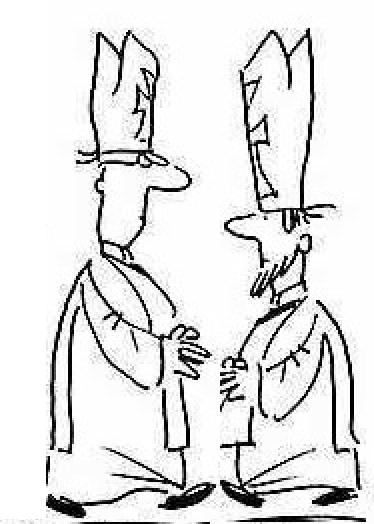Gay men in the modern Western world are accustomed to accusations a homoerotic orientation is seen as effeminate, sissyish. This is a complete myth, as is easily shown by the many counterexamples from the butch, bear and leather-oriented sub-groups that co-exist with the more camp and drag groups. The words "gay male" cover an astonishing degree of diversity. Still, stereotypes persist. Sometimes, though, they are not what we would expect.
In classical Greece and in Tokugawa Japan, same sex lovers were especially associated with courage and with military prowess. Elsewhere, the important virtues of "courage, proficiency in hunting, and the ability to dominate women" were so closely identified with masculinity that they were routinely passed on to young boys in the most direct way possible - by direct transfer from older males to younger in pure male essence - in semen, by anal or oral sexual intercourse.
This is from David F Greenberg , "The Construction of Homosexuality":
“The homosexual practices are justified by the belief that a boy will not mature physically unless semen is implanted in his body by an adult. Valued male qualities, such as courage, proficiency in hunting, and the ability to dominate women, are transmitted in the same way. Repeated intercourse builds up a supply of the vital substance in the boy’s body.”
But, says Greenberg, intercourse with women is believed to be debilitating. While this pattern of childhood homosexuality is found in a minority of Guinean societies, where it was recorded, it was obligatory for all. From a remarkably early age (sometimes as young as seven, sometimes ten or twelve), boys learnt to accept the all-important semen from an older age group. As they matured, these boys in turn would pass on their own semen to those younger than they. Not until they were fully mature were they permitted intercourse with women – by which time, presumably they were strong enough to withstand the debilitating effects of the experience.
The semen was transmitted in different ways: sometimes by anal intercourse, sometimes orally – or even by insertion into special incisions in the skin. In these cases, the semen was obtained from the older men, following special ritual intercourse with women.
The practice of passing on of manly virtue or other skills by donating semen was not restricted to New Guinea, although it was most widely studied and recorded there. In some Australian aboriginal groups, such as the Bora of the Kimberley region, drinking semen formed a part of intitiation rites. In Brazil, apprentice healers learned their skills from older, experienced healers - and did so by "sexual communication". In parts of northern Morocco, an important skill for young boys was the ability to learn the Koran, but they believed this was impossible until they had first been penetrated. The ability to learn the Koran was passed on to the new generation in the semen of their elders.
So - who's the sissy, then?
See also:
Books:Naphy, William: Born to be Gay
Greenberg, David F: The Construction of Homosexuality
Herdt, Gilbert H: Same Sex, Different Cultures
Murray, Stephen O: Homosexualities



